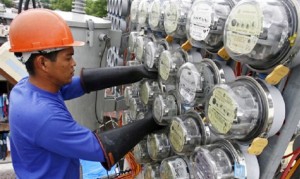The European Chamber of Commerce of the Philippines (ECCP) has urged government leaders and company executives to invest in energy-efficiency initiatives and programs that will help avert an expected 400-megawatt (MW) power supply shortage in Luzon next year.
Henry Schumacher, ECCP vice president for external affairs, stressed that implementing energy conservation alone would easily “save 20 to 30 percent of energy consumption and that is easily the capacity of the power plant we need as soon as possible or the energy deficiency we are facing” in the coming years.
“The ECCP is deeply concerned about the power situation in the country. We expect a reserve deficiency in the Luzon grid next year in the range of 300 to 400 MW or the size of a regular power plant. No one can buy a 300 MW power plant off the shelf. It takes a minimum of three years and in the Philippines with all the 162 environmental and other clearances, more than five years to get a good sized power plant ready for hookup to the grid,” Schumacher explained.
“But there is a short-term solution: Energy saving. We have maintained for a long time that if all of us, from the government to the private sector, from industrial zones to the malls, from call centers to individuals,” he added.
Schumacher urged high-ranking government officials, from the national to the local levels, to help create a more conducive environment where investment in energy efficiency could be strongly encouraged through the offering of a “carrot and stick” policy. Such a policy referred to offering incentives for those who make the right move and penalties for those who need to be pushed into energy efficiency.
“The ‘stick’ is needed to support energy supply as the driver for economic growth we are looking forward to,” Schumacher said.
The ECCP official likewise enjoined owners of non-energy efficient buildings as well as the CEOs, CFOs and facility managers of each company to make the necessary investments in energy efficiency, especially since reliable and competitive power was the key in driving not only economic growth, but their respective operations as well.
Schumacher further pointed out that there was no downside to energy efficiency as investments in such measures have an average payback period of three to five years and there were also a number of banks committed to make financing for energy efficiency projects available.
He disclosed that there were also a number of the so-called energy-efficiency vendors—from lighting to insulation to air-conditioning—that were willing to be paid through the energy saved because of the investments made in their systems and equipment.
Short-term measures to buy generation capacity would be “super expensive” and only further increase the prices of electricity, he added.
